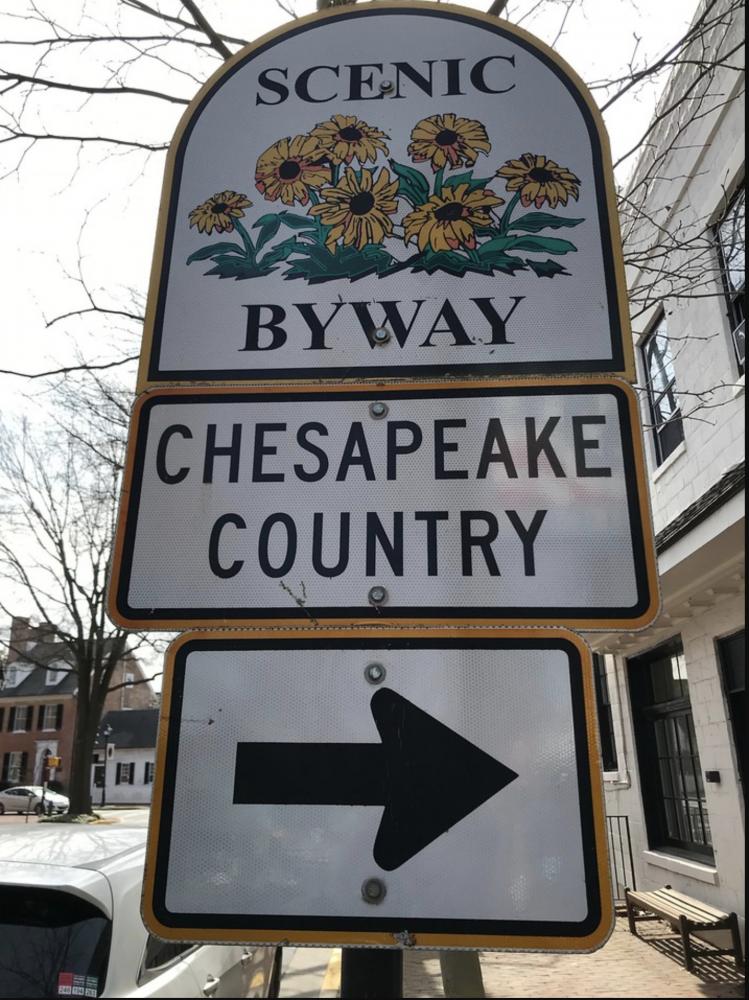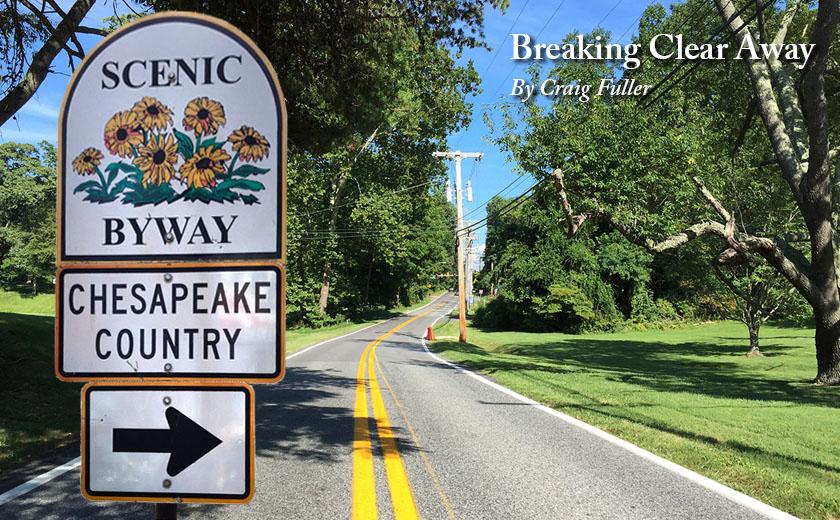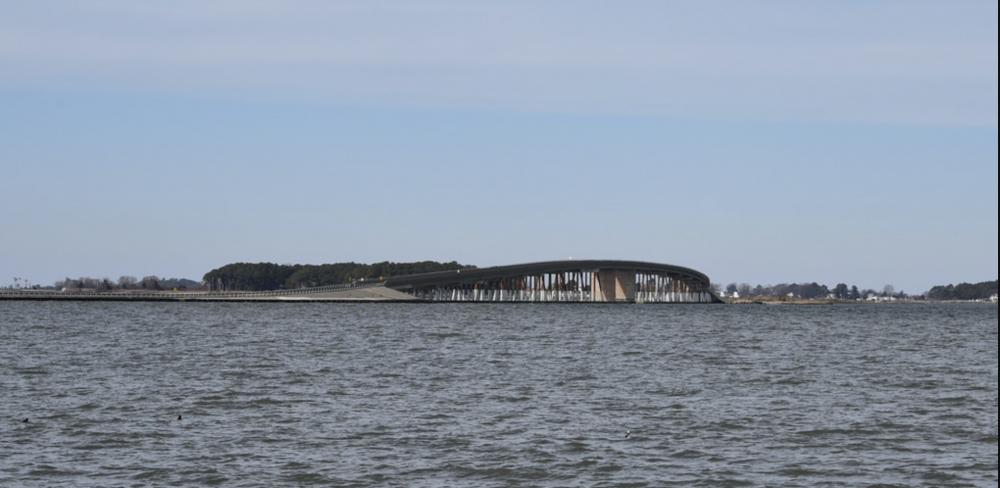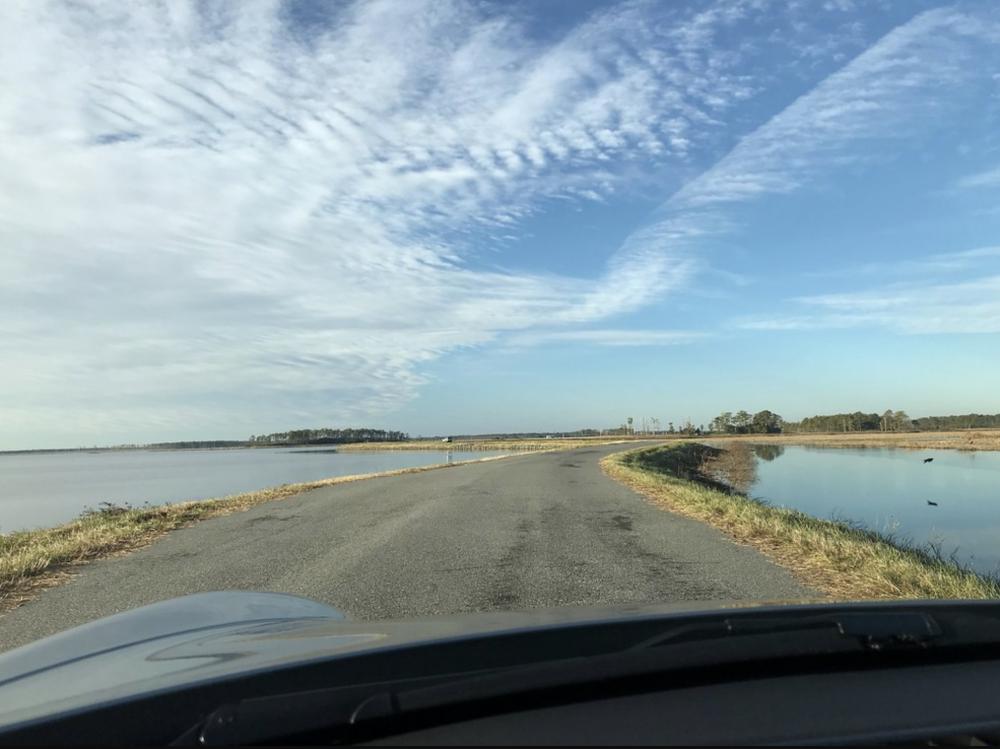Don’t know about you, but from time to time I just get obsessively curious about something.
 Driving to enjoy the special features of the beautiful area in which we live, I kept noticing that Scenic Byway signage often had a Chesapeake Country sign attached. Whether there are more of these signs being mounted around the area or I am just noticing them more frequently, I couldn’t help but wonder just what the geographic characteristics of Chesapeake Country entailed or who founded this “country” within a country.
Driving to enjoy the special features of the beautiful area in which we live, I kept noticing that Scenic Byway signage often had a Chesapeake Country sign attached. Whether there are more of these signs being mounted around the area or I am just noticing them more frequently, I couldn’t help but wonder just what the geographic characteristics of Chesapeake Country entailed or who founded this “country” within a country.
Turns out, it’s not so clear.
Seems that a confluence of thinking related to the protection our scenic beauty and encouragement of citizens to travel purely for the sake of enjoying our unique heritage culminated with federal, state and local officials launching common initiatives. So, who knew? But, with too few successful collaborations around these days, why not recognize a worthy effort.
Research uncovers that the states got into the action first in 1910 with Massachusetts enacting legislation authorizing cities or towns to designate scenic roads. Now, there are about 900 state scenic byways nationwide.
At the federal level, a burst of national awareness occurred back in 1965. Then, at a White House Conference on Natural Beauty, discussions on scenic roads lead to a call for scenic development and road beautification in the Federal highway system as part of the Highway Beautification Act of 1965.
One wonders why things didn’t move faster….although, the US Forest Service did start designating scenic roads in the late 1980s. Then, in 1991, The Intermodal Surface Transportation Efficiency Act established an Interim National Scenic Byways Program authorizing the U.S. Secretary of Transportation to designate National Scenic Byways and All-American Roads, as well as providing dedicated funding for byway projects. From 1992 to 2012, the Secretary made 150 such designations and provided $507 million for 3,174 projects.
Of course, no place is better than Washington, D.C. at establishing interest groups, and the scenic byways have theirs – Scenic America... And, wouldn’t you know, at this very moment Congress is being pressed – successfully – to reinvigorate the “dormant” National Scenic Byway program! Here’s the press release from last month by Scenic America concerning recent developments:
So, this brings us to Maryland’s scenic byways and what the State calls Chesapeake Country.
It appears the state embraced a federally designated national byway that runs from Chesapeake City to Kent Island. State and local officials looked at plans late in 2011 to expand the national byway further south. Today, the State of Maryland literature suggests that the Chesapeake Country Scenic Byway extends 419 miles from Chesapeake City to Crisfield. And, to add further emphasis, Maryland has designated a “Heart of the Chesapeake Country Heritage Area” governed by the Maryland Heritage Areas Authority and administered by the Maryland Historical Trust.
Believe it or not, this is the simple explanation for how and why Chesapeake Country came to be.
It also seems evident that well intentioned people wanted to capture the national excitement from James Michener’s 1978 novel, Chesapeake and thus encourage travel and tourism to our region.
However it all came about, in my view it is a worthy and important cause that brings people and revenue to the region by broadening the understanding of lands off of Highway 50.
As we look forward to improving weather with the arrival of spring, I intend to spend more time on the Scenic Byways of the region regardless of which governmental entity established them. They lead to important places that share stories of our past.
While the focus of the Scenic Byway program is road-based, the areas also provide hiking and boating opportunities.
From time to time I hope to provide a look at an interesting scenic place or two…but, don’t wait for me. Get your map and head out on your own adventure.
Ever seen this bridge? It’s found on the way to Hoopers Island and a world away from the larger cities we all pass through. Check it out one day. Share a favorite spot and we’ll give it well deserved attention.
There is no doubt that areas have been protected for generations so people can learn their stories and enjoy their beauty. And this all comes with a great benefit identified so eloquently by John Muir when he suggested we should, “…keep close to Nature’s heart… and break clear away, once in a while, and climb a mountain or spend a week in the woods….[to] wash your spirit clean.”
On the road at the Blackwater National Wildlife Refuge…
Craig Fuller served four years in the White House as assistant to President Reagan for Cabinet Affairs, followed by four years as chief of staff to Vice President George H.W. Bush. Having been engaged in five presidential campaigns and run public affairs firms and associations in Washington, D.C., he now resides on the Eastern Shore with his wife Karen.





[…] a recent column on our Scenic Byways throughout Chesapeake Country, we sent a Spy or two out to take a closer look. […]